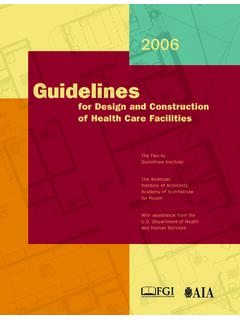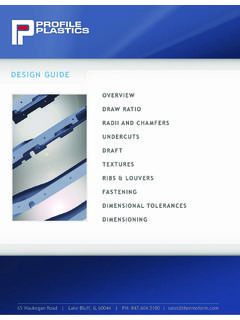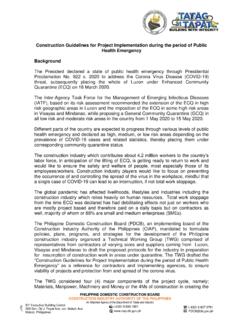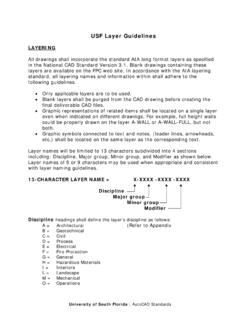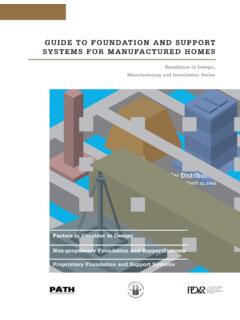Transcription of Bowling Green Construction Guidelines - Bowls Australia
1 1 Bowling GreenAN OFFICIAL Bowls Australia PUBLICATIONC onstruction guidelinesacknowledgementsBowls Australia acknowledges and expresses its sincere appreciation to the following people who have contributed to this Construction guideline: ContriButing AuthorKeith McAuliffe Sports Turf Institute Editors/rEviEwErsAlan Berry & David Aarons Berry Bowling SystemsDoug Agnew Agturf Pty Ltd (previously VGA President)Des Ryan Bowls Australia commercial operations managerCraig Morris Australian Bowls ConstructionsMark Cowan Bowls Australia national officiating director Neil Dalrymple Bowls Australia CEOR ichard Goodbody Bowls Australia communications and marketing managerSam Clough Bowls Australia selectorTony Sherwill Bowls Australia participation managerBen Scales Bowls SA general manager Steve Buffinton Civil Test Pty Ltd Tony Apthorpe NSW Greenkeepers Association Megan Cushnahan NZ Sports Turf Institute Douglas Golder - Consulting Civil EngineerPeter Hanlon Bowls Victoria CEOJo Prothero ConsultantJim Tritt and Dr Martin Schlegel STI Don Crockett TigerTurf Graeme Clark True DrawState & Territory Associations Construction Guidelines dEsign Michelle Quinn Jejak GraphicsPhotogrAPhyTigerTurf Sports Turf Institute
2 Victorian Greenkeepers AssociationMakmaxCopyright Bowls Australia 2011 Disclaimer: Bowls Australia Ltd, its member state and territory associations, along with contributors to and publishers of the Bowling Green Construction Guidelines advise that every effort has been made to ensure that the information in this Construction Guideline is accurate at the time of printing and none of them, either collectively or individually, accept any responsibility for any inaccuracy in these Construction Guidelines whether by inclusion or omission. The information and case studies are of a general nature and are presented as a guide only. The information in this Construction Guideline is not to be taken as a substitute for specific advice. Bowling clubs and other persons to whom the Construction Guidelines is provided need to make their own assessment as to whether or not the information contained in it is relevant to their needs and, where appropriate, seek specific professional advice.
3 Bowls Australia Ltd, its member state and territory associations, along with contributors to and publishers of the Bowling Green Construction Guidelines accept no responsibility for actions undertaken by Bowling clubs in relation to the information presented in this Construction message from Bowls Australia It is my pleasure to introduce you to the Bowls Australia Bowling Green Construction Guidelines . The overall purpose of this resource is to provide Bowling clubs with comprehensive Construction Guidelines to guide them through the process of installing or resurfacing natural or synthetic greens. It is a significant investment for any Bowling club and this Construction guideline is intended to assist Bowling clubs (their committee s and administrators) to make informed decisions and increase the ease in which the process can be navigated, with the aim of achieving a high quality Green on Australia has a vision to provide leadership and facilitate a collaborative approach for the growth, development and success of the sport and business of Bowls in Australia .
4 In partnership with our state and territory associations and close to 2000 Bowling clubs, Bowls Australia is striving to grow the current membership of over 220,000. By adopting the methodologies and techniques described in this Construction guideline, Bowling clubs across Australia will be confident that their new or resurfaced greens will be of a standard that the Bowling club will be proud of for many years to come. Finally, I wish to make special mention of Keith McAulliffe from Sports Turf Institute who has been instrumental in helping us to establish this resource. His technical advice and expertise has been of great assistance to this project. neil dalrympleChief Executive Officer taBle of contents ChAPtEr 1. introduction ..5 ChAPtEr 2. defining a major greens project and financial considerations ..7 ChAPtEr 3. the planning phase for a major greens project.
5 12 ChAPtEr 4. Project design and Construction phases ..16 ChAPtEr 5. resurfacing of a natural turf Green ..20 ChAPtEr 6. Constructing a new natural turf Green ..23 ChAPtEr 7. Converting from natural turf to synthetic turf Green ..26 ChAPtEr 8. Constructing a new synthetic Green ..28 ChAPtEr 9. Performance testing ..35 ChAPtEr 10. Aftercare and maintenance ..40 ChAPtEr 11. Environmental and legal ..43 ChAPtEr 12. Case studies and frequently asked questions ..45 ChAPtEr 13. other areas to consider ..47 ChAPtEr 14. Contacts and references ..48glossary of terms ..49 Appendix 1 ..51 Appendix 2 ..54 Appendix 3 .. PurPose of the Guidelines Installing a new Green , natural or synthetic, or refurbishing an existing Green is one of the most important projects a Bowling club will undertake. Most Bowling clubs operate on a limited budget, so it will be critical to ensure any investment is wisely spent with the risk of something going wrong minimised.
6 Major greens projects involve significant costs - which can escalate or be wasted if badly managed. A Construction or refurbishment project is going to offer a new challenge for most Bowling clubs. It will require new skills and ways of working. Although Bowls Australia recognises that it may be preferable for a Bowling club to employ specialist personnel with major projects, it is also acknowledged that many Bowling clubs have the experience and resources to be actively and directly involved in the Construction or refurbishment work. Regardless of the model used, a key to any refurbishment or Construction project is sound planning. Planning is not an added option, but is crucial for the project in order to: identify the key risks, ensuring sound financial management, maintaining a clear focus on essential matters, carrying the project to a successful conclusion and establishing the foundations for effective on-going management.
7 In approaching the task of planning a major project the Bowling club should avoid re-inventing the wheel and look to capitalise on the experiences of others and the national resource provided by Bowls Australia , Sports Turf Institute Aust. and other parties. The primary intent of these Construction Guidelines is to assemble and pass on the experiences and expertise of others who have embarked on Construction work. how to use the Guidelines Although the nature of a major greens project will vary, the same general procedure can be used to plan and implement the majority of projects. This guideline provides an overview of the process and main considerations when planning a major project. A project could be broken down into four main phases: i. Planning/investigation phase ii. Design phase iii. Construction phase iv. Post Construction phasechapter 1 introductionA synthetic turf greenA natural turf green6 During the planning phase, it will be necessary to investigate a number of key items, including the costs and benefits of different options (Chapter 2), legal and environmental considerations (Chapter 11) and the required performance standards (Chapter 9).
8 A Bowling club embarking on a major project will be able to follow a pathway through the Construction Guidelines by selecting relevant chapters. For example, a Bowling club constructing a new synthetic turf Green would refer to the following chapters:ChAPtEr 2 (Overview of options)ChAPtEr 3 (Planning process)ChAPtEr 4 (Design and Construction phase)ChAPtErs 9, 10 & 11 (Performance testing, maintenance and environmental/legal)ChAPtEr 8 (Constructing a new synthetic Green ) introDuction A major greens related project is a capital works program that incurs significant cost and time outlay. Such projects warrant extra resources and planning and the likely involvement of outside expertise. Major greens projects could include: Re-surfacing of a natural turf Green (Chapter 5); Constructing a new natural turf Green (Chapter 6); Conversion of a natural turf Green to a synthetic surface, or vice versa (Chapter 7); Construction of a new synthetic turf Green (Chapter 8).
9 Major projects could also include upgrade works such as a greens drainage project, the installation of a roofing structure, the installation of lighting, installation of a watering system or the replacement of the synthetic carpet. Playing surface oPtions When it comes to the playing surface, there are essentially two main categories of Bowling greens natural grass and synthetic turf. Within each category, there are different Construction options/product types available. Natural turf greens can vary in regard to how the root zone is constructed ( sand or soil), the turf type used ( cool-or warm-season grass type) and the maintenance program. Refer to Chapter 6 for a description of options. Expert advice, coupled with local experience, should be sought in order to identify what will work best for the Bowling club location.
10 Synthetic turf outdoor greens were first introduced into Australia over 30 years ago. There are now several different types of synthetic Green products on the market, each with varying performance characteristics. chapter 2 defining a maJor greens proJect and financial considerations tufted synthetic turf, generally sand-filledwoven mat or carpet needle-punch carpetCouch natural grassBent natural natural or synthetic turf? The relative merits of natural versus synthetic surfacing for lawn Bowls is a hotly debated topic. A Bowling club investigating the options will inevitably come up against staunch opinion, one way or the other. The decision on what surface is best will be site specific, and the Bowling club needs to complete a feasibility study that evaluates the costs and benefits of the different options (Chapter 3; Appendix 1). Where possible a dollar value should be assigned to all costs and benefits in order to allow a fully objective synthetic turf greenA natural turf greensynthEtiC turf grEEnADVANTAGES More use possible, which can open up a bigger market and bring in extra revenue to the Bowling club.

